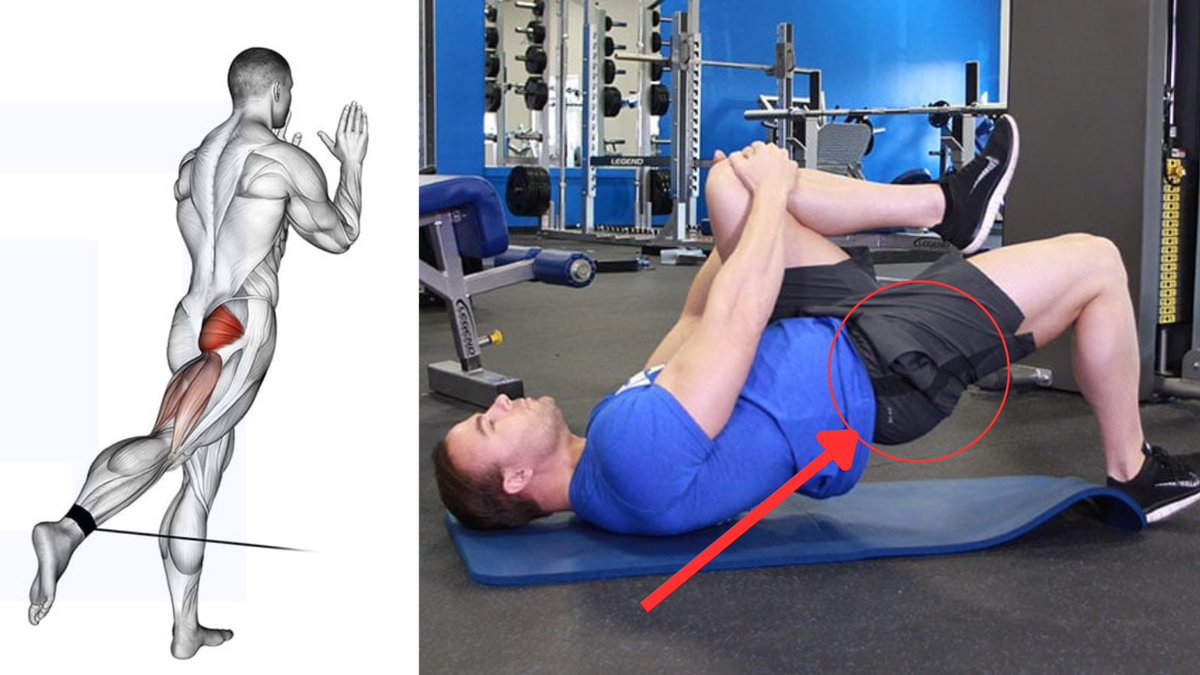A thread on common compensations during running & gait mechanics + what we can do to improve them
The body tends to self-organize to find what it is lacking.
A common foot action we see in running is a “heel whip”, where the heel excessively turns outward during toe-off...
The body tends to self-organize to find what it is lacking.
A common foot action we see in running is a “heel whip”, where the heel excessively turns outward during toe-off...
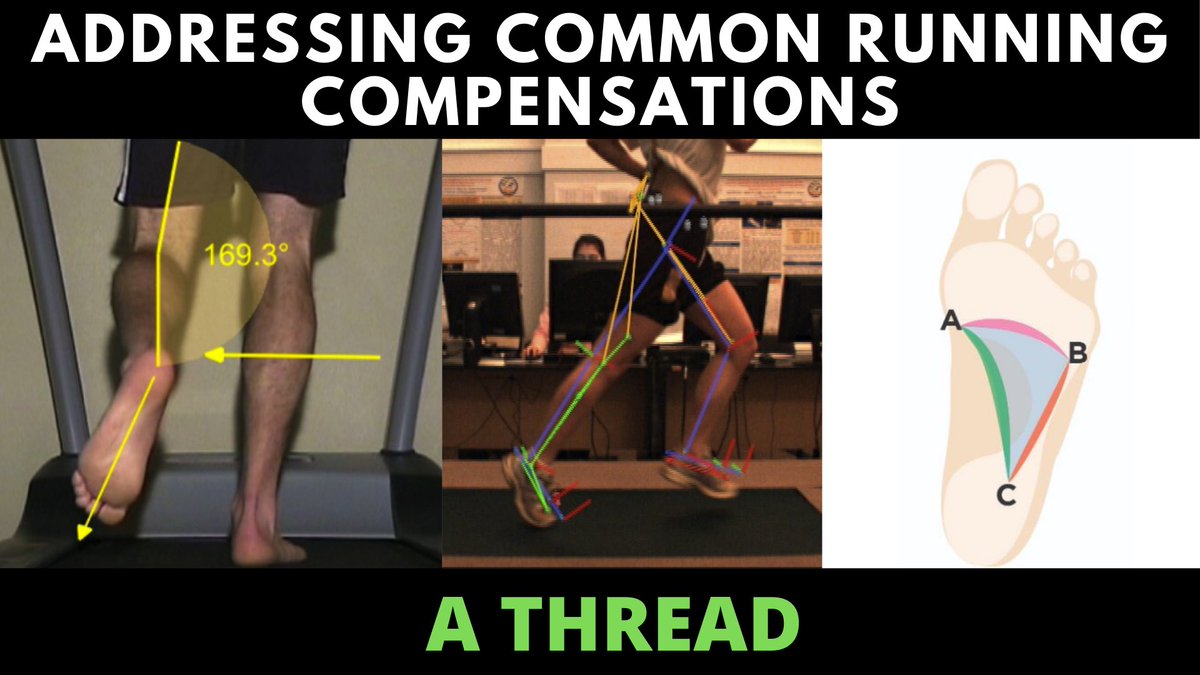
When we toe-off, the glute max helps push us forward via contact with the big toe and inside foot arch.
Upon toe-off, the tibia (lower leg) externally rotates (turns out), which allows the foot arch to rise and sets us up for swinging the leg through afterwards.
Upon toe-off, the tibia (lower leg) externally rotates (turns out), which allows the foot arch to rise and sets us up for swinging the leg through afterwards.
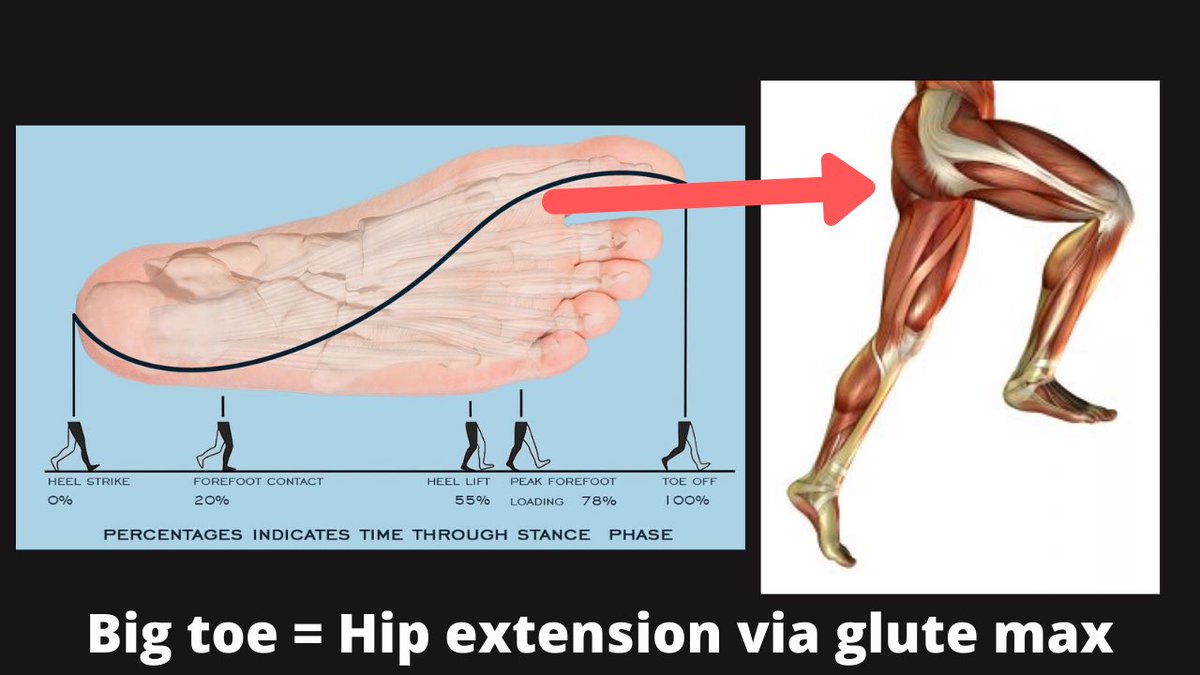
If you see a tibia (lower leg) that's excessively rotated outward, it could be a foot trying to find a pronation strategy and internal rotation due to a leg and/or pelvis that's biased towards external rotation.
This can apply to both standing, walking, and running.
This can apply to both standing, walking, and running.
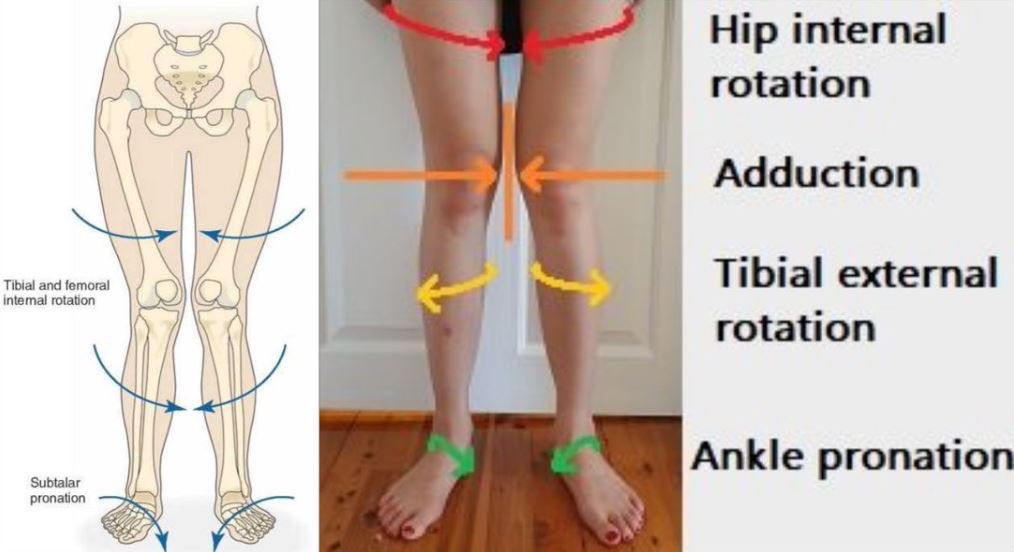
Normally we should see internal rotation of the whole lower limb + foot pronation.
So one potential explanation for heel whip is the foot is trying to pronate and use the glute in the best way it can find.
The pronation is likely compensatory as the lower body is not synced up.
So one potential explanation for heel whip is the foot is trying to pronate and use the glute in the best way it can find.
The pronation is likely compensatory as the lower body is not synced up.
Another possible scenario is that the runner is missing hip extension.
As mentioned above, when we toe-off or push off, the hip needs to extend.
It is this action that occurs with the momentum of the other leg coming forward to keep us
As mentioned above, when we toe-off or push off, the hip needs to extend.
It is this action that occurs with the momentum of the other leg coming forward to keep us

moving forward.
If there is a lack of hip extension, the heel tends to be whipped outward too early and then the foot can end up striking too much on the inside ankle, which causes a high amount of pronation.
If there is a lack of hip extension, the heel tends to be whipped outward too early and then the foot can end up striking too much on the inside ankle, which causes a high amount of pronation.
Limited hip extension (letter B) can also reduce stride length, which in turn will limit necessary backside mechanics that should be happening for the bodyweight to translate over the foot. 
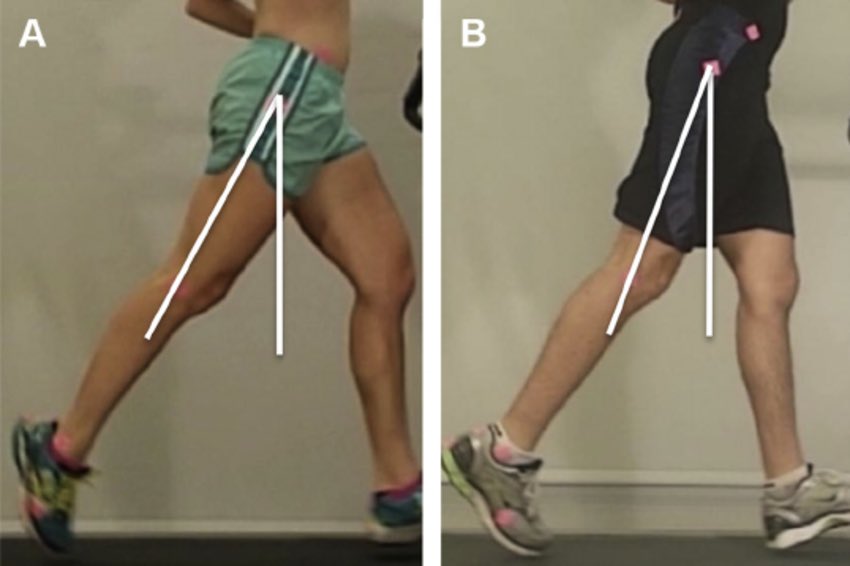
To know if you’re missing hip extension, try this simple test.
Bring the top knee back and try to get it in-line with the hip, trunk, & head.
If you see low back arching before knee is in line, you’re using back extension to compensate for hip extension (3rd rep):
Bring the top knee back and try to get it in-line with the hip, trunk, & head.
If you see low back arching before knee is in line, you’re using back extension to compensate for hip extension (3rd rep):
To address these circumstances, we should first ask “is this even a problem?”
Many people compensate and that’s completely ok. Many high-level runners are great compensators.
However, if there are associated issues that are likely caused by a compensation, we can
Many people compensate and that’s completely ok. Many high-level runners are great compensators.
However, if there are associated issues that are likely caused by a compensation, we can
select exercises that help promote more fluid mechanics.
For the first scenario where there is a miss of internal rotation and proper pronation, one (but not the only) exercise I would choose is a rear foot elevated split squat with a contralateral load.
For the first scenario where there is a miss of internal rotation and proper pronation, one (but not the only) exercise I would choose is a rear foot elevated split squat with a contralateral load.
The load placement helps us “shift over” to the forward leg to syncing up internal rotation of the whole lower limb which is necessary for the foot to properly pronate.
Make sure they’re feeling the “tripod” foot contact to ensure no collapsing in of the ankle.
Make sure they’re feeling the “tripod” foot contact to ensure no collapsing in of the ankle.
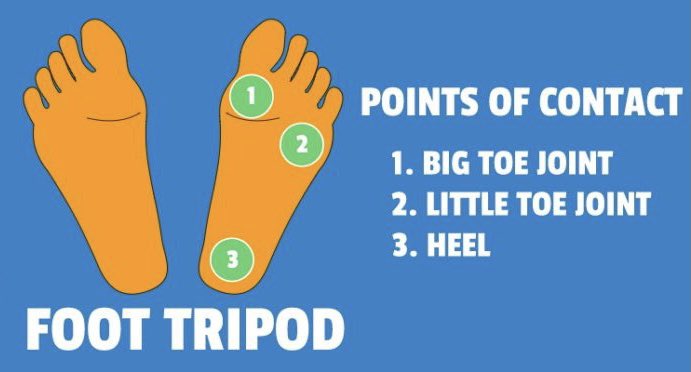
For the second scenario, I recommend something as simple as a cook hip lift to restore hip extension and hip external rotation.
While keeping your whole foot flat, push through the inside edge of the foot arch to maximize glute recruitment.
While keeping your whole foot flat, push through the inside edge of the foot arch to maximize glute recruitment.
This is not a comprehensive guide to these issues, but these are effective interventions I’ve found to work in the right context.
Hopefully this helps illustrate the general idea ✅
Hopefully this helps illustrate the general idea ✅
• • •
Missing some Tweet in this thread? You can try to
force a refresh





